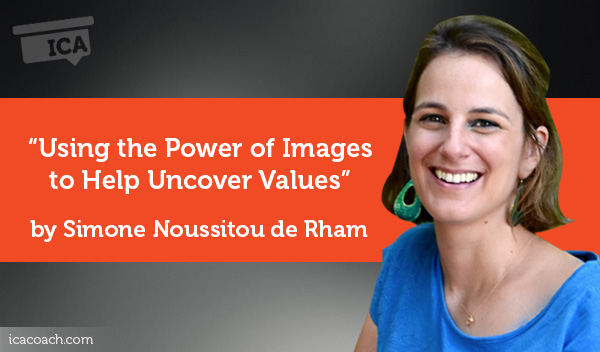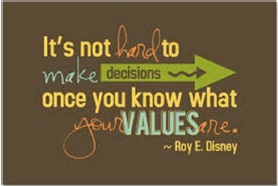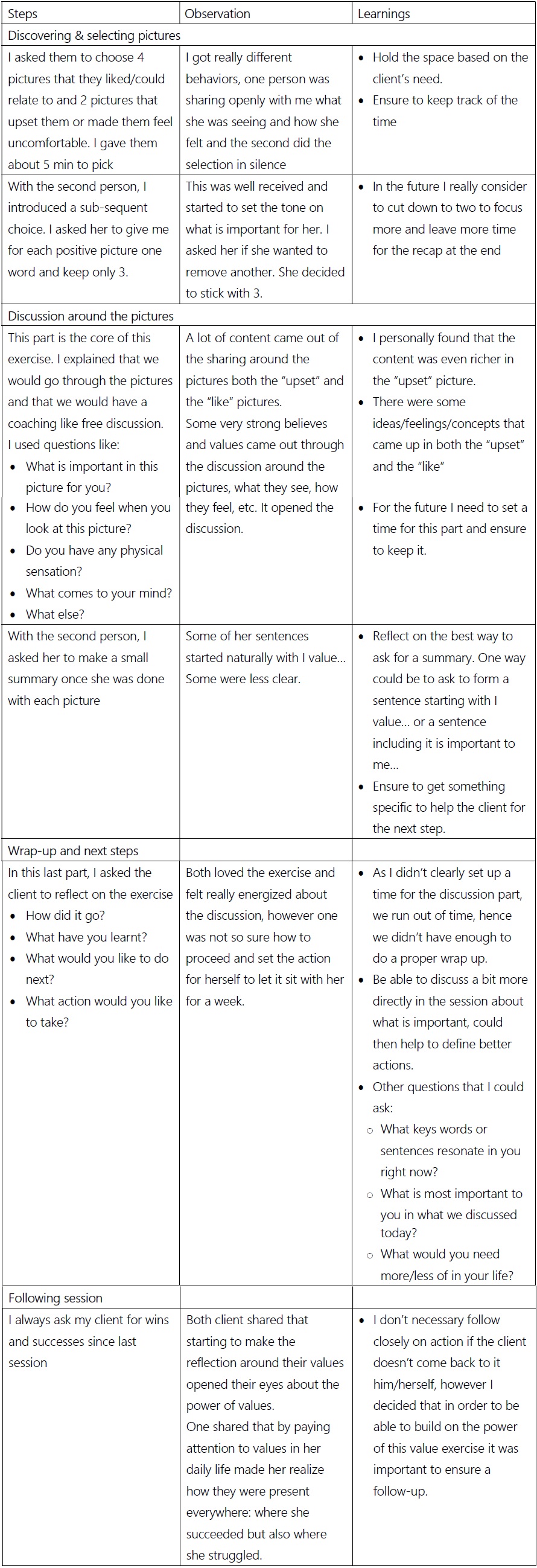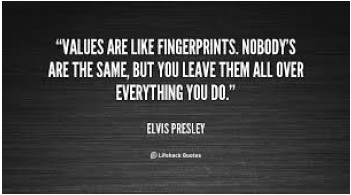
Research Paper By Simone Noussitou de Rham
(Life & Career Coach, SWITZERLAND)
Introduction
Before starting the training at ICA, I decided to work with a coach to help consolidate the change I was going through as well as testing what I wanted to do myself: coaching.
This experience convinced me that yes, I really want to get trained as a coach as it was a terrific and very empowering experience for me.
What was the turning point for me?
Increase my self-awareness especially around
And how to leverage this new awareness to help me achieve whatever next step I envisioned for myself.

The more I progress in my journey as a coach, the more I realize the importance of self-awareness.
This is why I started to suggest to cover strengths and values discovery in my coaching relationships.
In this case study, I would like to explore my experiments on the topic (re)-discover your values.
How do I define Values?
Here a definition from the Professor at Northern Iowa: Nageswara Rao Posinasetti1 that resonates with me:
Values are principles, standards or qualities that an individual (or group of people) hold in high regard. These values guide the way we live our lives and the decisions we make. A value may be defined as something that we hold dear, those things/qualities/ideas which we consider to be of worth.
Values are different from believes, where the later are concepts that we hold true. However, values and believes go hand in hands. The belief: “All people are created equal”, could trigger the value: we should respect diverse viewpoints. Or because I think that the concept “all people are created equal” is true, it is important to me to respect diverse viewpoints.
Finding the right tool
In the contrary of strengths where I got rapidly convinced of the Gallup strengths finder test, I didn’t find anything convincing for value.
Many websites rely on a basic inquiry-based exercise using powerful questions around topics like:
Most of the exercises suggest as well to get inspired by a list of given values.
When I was coached I did one of these exercise, and it made me feel that I was shopping for values. There was often a little voice in my head who said, is it really what is important to me or is it more what I would like to be important to me. Some values just sounded more appealing than other. At that time, I was hoping for something more intuitive to help me discover the ideas that are important to me.
While I was searching for a way to cover this aspect, I attended a class about visualization. The facilitator shared that in her perspective an important aspect of a powerful visualization was to be able to let go the control over the process of visualizing. The picture should come to you not you create the picture. This gave me an idea: I could apply the same concept to finding your values: your values should unveil itself and not you choose your value. The question was then how to introduce a tool that could help remove the focus of my client to look for values and liberate them to let the values come to them.
As I always liked to work with pictures, I decided to try to develop a little picture-card support tool to play the role of distractor to uncover core values.
I found a pre-set of picture that I re-customized based on the relevancy of these pictures.
Experimenting the tool
So far, I was able to use it with two clients and I would like to share my learnings on these first two trials and my next steps.
Both clients were willing to learn more about their values and they decided when they wanted to do this exercise.
On the session they requested to work on values, I shared with them a link to OneDrive with all the pre-selected pictures. The idea is to avoid too much thinking beforehand in order to leave full space to spontaneous reaction.
In the introduction, I also insisted on the importance to let their thoughts come out in a free-way and shared the sentence, “let the picture pick you and not you pick the picture”.

Overall Learnings & reflections
It has been a great learning overall for me to customize my own tool around values. It has helped me to define better what I wanted to do with this topic and as well build something that was working for me and my clients. I look forward to continue using it and refine it with additional inputs and feedbacks.
